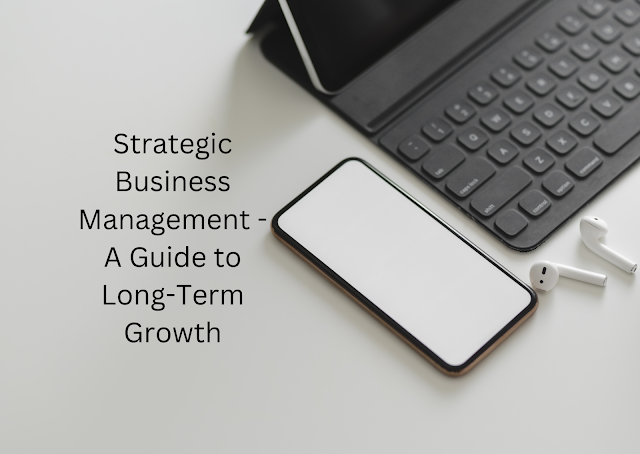Strategic Planning for Long-Term Business Growth: Essential Tips
In the ever-evolving business landscape, long-term success hinges on strategic planning that goes beyond short-term gains. To position your business for sustained growth, consider these essential tips for effective strategic planning.
- Visionary Leadership: Cultivate leadership that thinks beyond the immediate horizon. A visionary approach involves anticipating industry shifts and proactively adapting to change. Leaders should inspire a shared vision within the organization, aligning every effort with long-term goals.
- Comprehensive Market Analysis: Conduct a thorough analysis of your market and industry. Understand current trends, identify potential disruptors, and assess the competitive landscape. This insight is critical for making informed decisions that withstand the test of time.
- Customer-Centric Focus: Place your customers at the heart of your strategy. Regularly gather feedback, analyze customer behavior, and adapt your offerings to meet evolving needs. A customer-centric approach builds loyalty and establishes a solid foundation for sustainable growth.
- Strategic Partnerships: Forge strategic partnerships that extend beyond immediate gains. Collaborate with entities that share your long-term vision and complement your strengths. These alliances can provide access to new markets, technologies, and resources.
- Investment in Innovation: Allocate resources to research and development, fostering a culture of innovation. Stay ahead of the curve by embracing emerging technologies, trends, and methodologies. This commitment to innovation ensures your business remains relevant in a rapidly changing environment.
- Talent Development: Invest in the growth and development of your workforce. Equip your team with the skills needed for the future, encourage continuous learning, and foster a culture that attracts and retains top talent. A skilled and motivated workforce is a key driver of long-term success.
- Adaptive Risk Management: Develop a robust risk management strategy that acknowledges uncertainties. Anticipate potential challenges and have contingency plans in place. An adaptive approach to risk management allows your business to navigate unforeseen circumstances without derailing long-term objectives.
- Financial Prudence: Maintain financial discipline and allocate resources strategically. Regularly assess your financial health, optimize operational efficiency, and make informed investment decisions. A financially stable foundation is crucial for weathering economic fluctuations and fueling sustained growth.
- Agile Implementation: While long-term planning is essential, be agile in execution. Regularly reassess your strategies in light of market dynamics and adjust your course as needed. An agile approach ensures that your business remains responsive to changing circumstances.
- Measurable Metrics and KPIs: Establish clear, measurable key performance indicators (KPIs) to track progress toward long-term goals. Regularly evaluate performance against these metrics and use the insights gained to refine and enhance your strategic initiatives.
In conclusion, successful long-term business growth requires a holistic and forward-thinking strategic planning approach. By combining visionary leadership, market intelligence, customer-centricity, strategic partnerships, innovation, talent development, risk management, financial prudence, agile implementation, and measurable metrics, your business can navigate the complexities of the future and thrive in the years to come.



Comments
Post a Comment